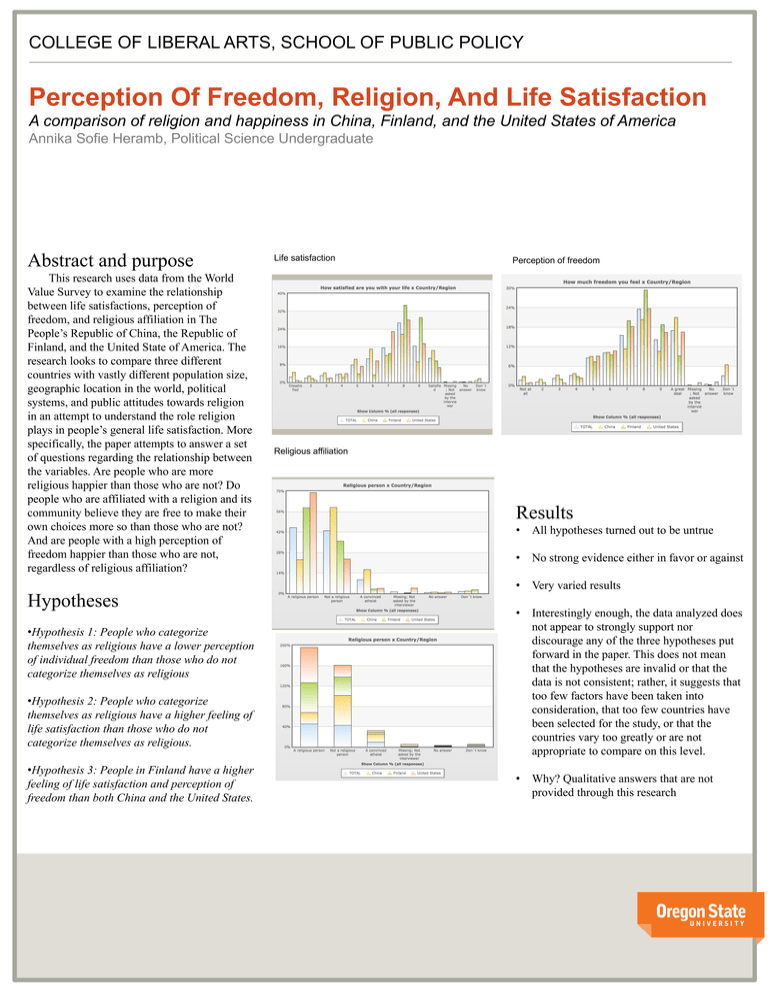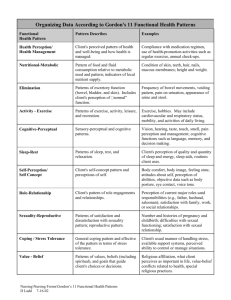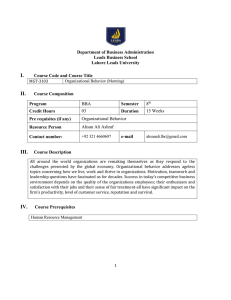Perception Of Freedom, Religion, And Life Satisfaction Abstract and purpose
advertisement

COLLEGE OF LIBERAL ARTS, SCHOOL OF PUBLIC POLICY Perception Of Freedom, Religion, And Life Satisfaction A comparison of religion and happiness in China, Finland, and the United States of America Annika Sofie Heramb, Political Science Undergraduate Abstract and purpose This research uses data from the World Value Survey to examine the relationship between life satisfactions, perception of freedom, and religious affiliation in The People’s Republic of China, the Republic of Finland, and the United State of America. The research looks to compare three different countries with vastly different population size, geographic location in the world, political systems, and public attitudes towards religion in an attempt to understand the role religion plays in people’s general life satisfaction. More specifically, the paper attempts to answer a set of questions regarding the relationship between the variables. Are people who are more religious happier than those who are not? Do people who are affiliated with a religion and its community believe they are free to make their own choices more so than those who are not? And are people with a high perception of freedom happier than those who are not, regardless of religious affiliation? Hypotheses • Hypothesis 1: People who categorize themselves as religious have a lower perception of individual freedom than those who do not categorize themselves as religious • Hypothesis 2: People who categorize themselves as religious have a higher feeling of life satisfaction than those who do not categorize themselves as religious. • Hypothesis 3: People in Finland have a higher feeling of life satisfaction and perception of freedom than both China and the United States. Life satisfaction Perception of freedom Religious affiliation v Results • All hypotheses turned out to be untrue • No strong evidence either in favor or against • Very varied results • Interestingly enough, the data analyzed does not appear to strongly support nor discourage any of the three hypotheses put forward in the paper. This does not mean that the hypotheses are invalid or that the data is not consistent; rather, it suggests that too few factors have been taken into consideration, that too few countries have been selected for the study, or that the countries vary too greatly or are not appropriate to compare on this level. • Why? Qualitative answers that are not provided through this research






